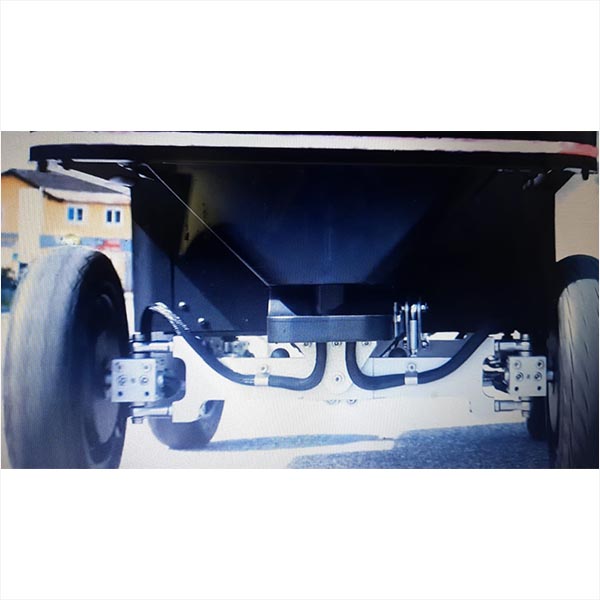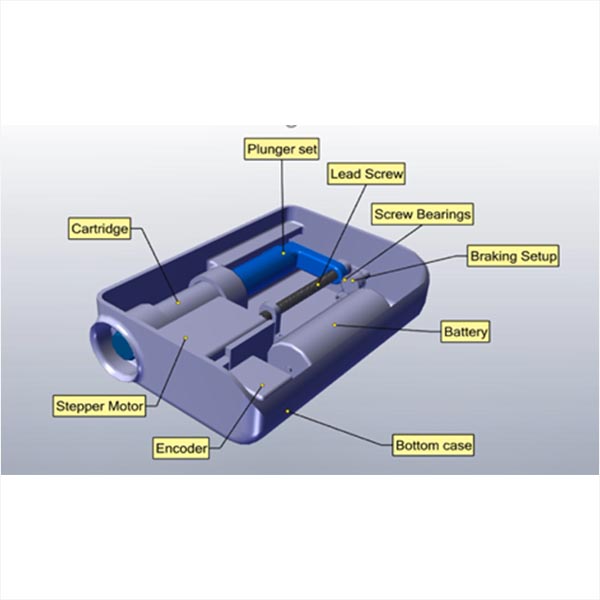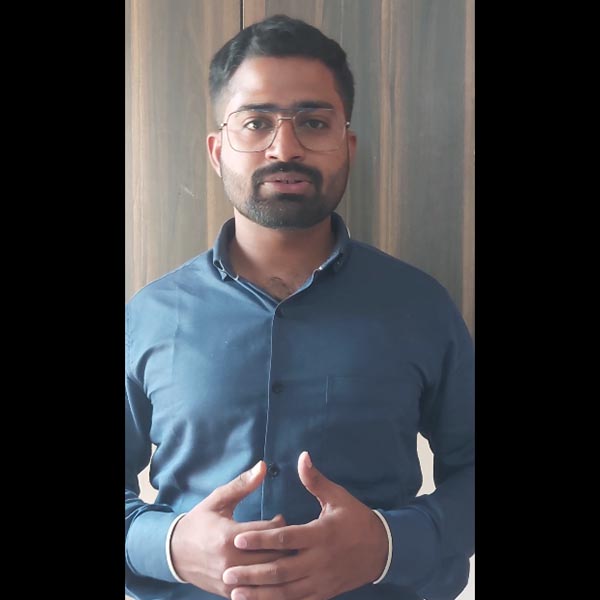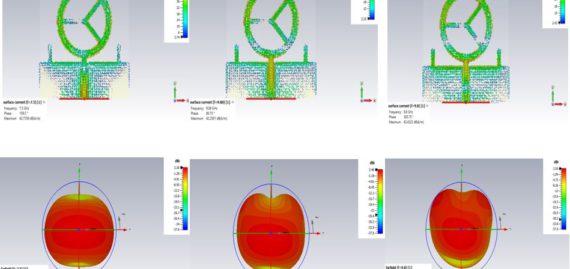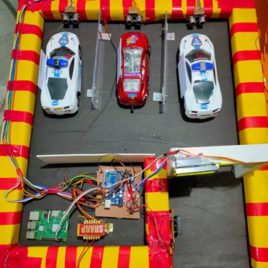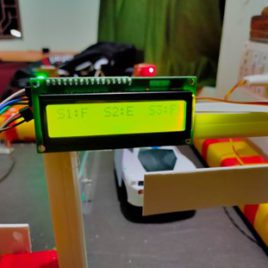Communication Domain is a field that focuses on designing electronic devices and circuits. It is one of the most rapidly growing fields of engineering. There are numerous topics that one can study in this field, such as reception of data, antenna and wave progression, Internet of Things, etc.
Domain Track: Communication Systems
Course Attendees
Still no participant
Course Reviews
Still no reviews
Track Total Credits ( 4-8-6)
Domain Code : CSCU2080
Courses Division( list all divisions):
Communication Systems Domain is an 18-credits course offered by the Department of Electronics and Communication Engineering and consists of the following subjects.
- Microwave & RADAR Communications (2-1-0)-CUCS2084
- Satellite & TV Communications (1-2-0)-CUCS2081
- Cell Site and BTS Installation (0-3-0)-CUCS2087
- Optics and Wireless Sensor Networks (1-2-0)-CUCS2086
- Project (0-0-6)-CUCS2085
Domain Track Objectives:
This domain is dealing with different microwave components design and simulation using Industrial standard Software Tool “Ansys HFSS Software”. Here student also learn RADAR Communication concepts and the antenna required for 5G technique, which is completely a new field in antenna design. Students will simulate the Digital Communication link and implement orthogonal frequency-division multiplexing (OFDM), a multicarrier modulation scheme using MATLAB software. Wireless sensor networks (WSNs) are networks of spatially dispersed and dedicated sensors that monitor and record environmental conditions and transmit the collected data to a central location. Students will learn how to develop a self-configured and infrastructure-less wireless networks to monitor physical or environmental conditions, such as temperature, sound, vibration, pressure, motion or pollutants and to cooperatively pass their data through the network to a main location or sink where the data can be observed and analysed.
- Develop the skills required to design next-generation wireless sensor networks
- To involve the students in the theory and practice of wireless communications
Domain Track Learning Outcomes:
- Various Communications available and their challenges in the modern era.
- Antenna designs for high-frequency applications
- Basic Mobile Tower troubleshooting and maintenance
- Installation of BTS and measuring different RF factors involved
- Analysis of existing communication protocols
Career Scope:
- Communication Systems engineers work for defence, space, and other IT organizations, developing and designing telecommunication and signal processing systems and devices.
- Software Engineer
- RF Telecom Engineer
- Higher studies and Research
- Self-employment through entrepreneurship
Software and Hardware:
- 1. Ansys HFSS Software Tool: Antenna Design, RF Circuit Simulation, Microwave Components Design
- 2. Campus Wide Cloud License MATLAB Software
- 3. Embedded Board
- 4. Sensors
- 5. IoT Devices and other components
Course content
1. Microwave & RADAR Communications
- 1.1 Introduction to Microwaves: Microwave frequencies
- 1.2 Scattering matrix formulation
- 1.3 Passive microwave devices
- 1.4 Active Microwave Devices
- 1.5 Study of field pattern of various modes inside a rectangular
- waveguide
- 1.6 Microwave Measurements
- 1.7 Transit time limitations in Microwave Bipolar Transistors
- 1.8 Power frequency limitations Microwave Field Effect Transistors
- 1.9 Gunn Effect
- 1.10 IMPATT diodes
- 1.11 TRAPATT diodes
- 1.12 Microwave vacuum tube based devices
- 1.13 Limitations of conventional tubes at UHF
- 1.14 Microwave Klystron
- 1.15 Reflex klystron,
- 1.16 Traveling wave tube
- 1.17 Magnetron
- 1.18 Introduction to Smith chart and its application for the unknown impedance measurement
- 1.19 Scattering Matrix Parameters
- 1.20 Introduction to radar and RADAR Parameters
- 1.21 MTI RADAR
- 1.22 FMCW RADAR
- 1.23 Tracking RADAR
- 1.24 Monpulse RADAR
- 1.25 RADAR Receiver
- 1.26 Synthetic Aperture RADAR
Text Books:
- 1. R E Collin, “Foundation for Microwave Engineering”, John Wiley & Sons, 2nd Edition, 2007
- 2. S Y LIAO, “Microwave Devices and Circuits”, PHI, 3rd Edition, 2003.
- 3. Merrill I skolnik, “Introduction to Radar Systems’, McGraw Hill, 2nd Edition,2007.
- 4. G S N Raju, “Radar Engineering and Fundamentals of Navigational Aids”, IK international Publishers, 2008
- 5. G S N Raju, “Microwave Engineering ”, IK international Publishers, 2008.
2. Satellite & TV Communications (32 Hours)
- 2.1 Configuration of a satellite communications system
- 2.2 Types of orbit
- 2.3 Radio regulations
- 2.4 Keplerian orbits
- 2.5 Useful orbits for satellite communication
- 2.6 Perturbations of orbits
- 2.7 Digital video broadcasting via satellite (DVB-S)
- 2.8 Second generation DVB-S
- 2.9 Digital transmission of telephony
- 2.10 Digital broadcasting of television
- 2.11 Configuration of a link
- 2.12 Uplink received power
- 2.13 Downlink received power
- 2.14 Additional losses
- 2.15 Noise power spectral density at the receiver input
- 2.16 Individual link performance
- 2.17 Influence of the atmosphere
- 2.18 Mitigation of atmospheric impairments
- 2.19 Overall link performance with transparent satellite
- 2.20 Overall link performance with regenerative satellite
Case Study: A field report as a part of practice will be submitted by visiting the Nearest center and observing the satellite links and TV transmission techniques.
Text Book
- 1. Satellite communications systems / Gerard Maral, Michel Bousquet. — 5th ed, wiley , 2010.
- 2. Satellite Communications, by Dennis Roddy (Fourth edition), McGraw Hill
- 3. Satellite Communication, by Timothy Pratt, Charles Bostian, Jeremy Allnutt (Second Edition), John Wiley & Sons
3.Cell Site and BTS Installation (36 Hours)
- 3.1 Antennas for mobile Tower
- 3.2 Power supply at BTS
- 3.3 Equipment used in the Shelter
- 3.4 Power Interface Unit (PIU)
- 3.5 Line Conditioning Unit (LCU)
- 3.6 Free Cooling Unit (FCU)
- 3.7 Preventive Maintenance (PM) & site management
- 3.8 Basic functioning of alarm box and the interface
- 3.9 Concept on TRX & Baseband receiver unit.
- 3.10 RF Propagation path loss
- 3.11 Frequency hopping and Planning
- 3.12 RF Optimization
- 3.13 GSM RF Drive Test
- 3.14 3G Optimization
- 3.15 EMF Radiation Calculation and testing
- 3.16 4G Optimization
- 3.17 RF Propagation path loss
- 3.18 Frequency hopping and Planning
- 3.19 RF Optimization
- 3.20 GSM RF Drive Test
- 3.21 3G Optimization
- 3.22 EMF Radiation Calculation and testing
- 3.23 4G Optimization
Text Book:
- 1. Advanced cellular network planning and optimization 2G/2.5G/3G. . .evolution to 4G , Author: Ajay R Mishra, Nokia Networks, John Wiley & Sons Ltd, The Atrium, Southern Gate, Chichester, West Sussex PO19 8SQ, England
- 2. Radio Network Planning and Optimisation for UMTS, Second Edition, JaanaLaiho and AchimWacker, Nokia Group, Finland, Toma´ sˇ Novosad, Nokia Networks, Nokia Group, USA, John Wiley & Sons Ltd, The Atrium, Southern Gate, Chichester, West Sussex PO19 8SQ, England
- 3. Material: E1-E2 Upgradation Course –Consumer Mobility, RF Planning and Drive Test
- 4. Material: GTL, RF Optimisation
4.Optics and Wireless Sensor Networks (36 Hours)
- 4.1 Propagation of signals in optical fiber:
- 4.2. Transmission characteristics of optical fiber
- 4.3 .Optical fiber Transmitters.
- 4.4. Optical Components.
- 4.5 Optical fiber loss measurement using power meter, LASER and OTDR.
- 4.6. Layered Protocol Model in the Transport Network.
- 4.7. SONET and SDH, Architecture of Optical Transport Networks (OTNs)
- 4.8 Implementation and performance analysis of TCP/IP protocols. Tools to be used: NS2 Simulator and Socket Programming
- 4.9. Challenges for Wireless Sensor Networks.
- 4.10. Single-Node Architecture - Hardware Components.
- 4.11. Network Architecture - Sensor Network Scenarios
- 4.12. Physical Layer and Transceiver Design Considerations.
- 4.13. Routing Protocols.
- 4.14. Topology Control, Clustering.
- 4.15 Arduino and Wireless Communications
- 4.16. Sensor Tasking and Control.
- 4.17 WSN using Arduino with Wireless modules
- 4.18 MATLAB Experiments Related to Compressed Sensing for Energy-Efficient WSN
- 4.19. Sensor Node Hardware – Berkeley Motes, Programming Challenges.
- 4.20. Node-level Software platforms, Node-level Simulators.
Text Book:
- 1. John M. Senior, "Optical fibre communication", Pearson edition, 2000
- 2. Uyless Black "Optical Networks ", Pearson Education , 2011.
- 3. Holger Karl and Andreas Willig, “Protocols and Architectures for Wireless Sensor Networks", John Wiley, 2005
- 4. KazemSohraby, Daniel Minoli, &TaiebZnati, “Wireless Sensor Networks-Technology, Protocols, and Applications”, John Wiley, 2007. Anna Hac, “Wireless Sensor Network Designs”, John Wiley, 2003
Reference books:
- 1. Rajiv Ramswami and K. N. Sivarajan, "Optical Networks", Morgon Kauffman Publishers, 2008.
- 2. Gerd Kaiser, "Optical fiber Communication Systems", John Wiley, New York, 2009.
- 3. Feng Zhao and Leonidas J. Guibas, “Wireless Sensor Networks- An Information Processing Approach", Elsevier, 2007.
List of Projects
(To follow the Gate Process)
- Insulin Pump Prototype Development
- Communication Receiver Performance Analysis Machine Learning Algorithm (Using Python/ MATLAB)
- Smart Antennas Design using HFSS/CST for Medical Applications
- 5G NR Study
- WSN using Arduino with Wireless Modules BLE, WiFi, ZigBee and LoRa
- Spectral Efficiency improvement and Hardware complexity reduction using MIMO technique
- FSO Communication, VLC using MATLAB Simulink
- RADAR System Implementation using MATLAB/SIMULINK
- Door and Window Detection for Social Robot Navigation
1. Microwave & RADAR Communications
- Session 1: Introduction to Microwaves: Microwave frequencies - advantages and applications
- Video Link...

- Session 2: Scattering matrix formulation: Concept of N port scattering matrix representation - S parameters properties
- Video Link...

- Session 3: Passive microwave devices: bends – corners – attenuators - phase changers, S Matrix Calculations for 2 port Junction: E plane and H plane Tees - Magic Tee
- Video Link...

- Video Link...

- Video Link...

- Session 4: Directional Coupler - Circulator and Isolator.
- Video Link 1...

- Video Link 2...

- Video Link 3...

- Session 5: Study of field pattern of various modes inside a rectangular waveguide
- https://www.iitk.ac.in/mimt_lab/vlab/index.php?pg=waveguide/aim&usr=vamshi51&enc=52b8bc63db0e63b9c0a85dbdd413b70e
- Session 6: Measurement of the dielectric constant and loss tangent of materials in microwave frequency band using a rectangular waveguide cavity
- https://www.iitk.ac.in/mimt_lab/vlab/index.php?pg=cavity/aim&usr=vamshi51&enc=52b8bc63db0e63b9c0a85dbdd413b70e
- Session 7: Transit time limitations in Microwave Bipolar Transistors, Power frequency limitations
- Video Link...

- Session 8: Microwave Field Effect Transistors
- Video Link...

- Session 9: Gunn Effect: RWH theory - High-field domain and modes of operation - microwave amplification,
- Video Link...

- Session 10 & 11: Avalanche transit time devices: IMPATT and TRAPATT diodes, parametric amplifiers.
- Video Link...

- Session 12: Microwave vacuum tube
- Video Link...

- Session 13: Limitations of conventional tubes at UHF
- Video Link...

- Session 14 & 15: Microwave Klystron: Two cavity Klystron - velocity modulation - multicavity klystron -Reflex klystron,
- Video Link...

- Session 16: Traveling wave tube
- Video Link...

- Session 17: Magnetron
- Video Link...

- Session 18: Introduction to Smith chart and its application for the unknown impedance measurement
- Video Link...

- https://www.iitk.ac.in/mimt_lab/vlab/index.php?pg=smith/aim&usr=vamshi51&enc=52b8bc63db0e63b9c0a85dbdd413b70e
- Session 19: Concept of Generalized N-port scattering parameters, and formulation of these parameters into 2-port reflection and transmission coefficients.
- https://www.iitk.ac.in/mimt_lab/vlab/index.php?pg=s_parameter/aim&usr=vamshi51&enc=52b8bc63db0e63b9c0a85dbdd413b70e<
- Session 20: Introduction to radar and radar parameters
- Video Link 1...

- Video Link 2...

- Video Link 3...

- Video Link 4...

- Session 21: MTI RADAR
- Video Link 1...

- Video Link 2...

- Session 22: FM CW radar
- Video Link 1...

- Video Link 2...

- Session 23: Tracking RADAR
- Video Link...

- Session 24: Monopulse: amplitude comparison and phase comparison methods, Radar antennas.
- Video Link...

- Session 25 & 26: Radar Receiver: The Radar Receiver, Receiver Noise Figure, Super Heterodyne Receiver, Duplexers and Receivers Protectors, Radar Displays.
- Video Link 1...

- Video Link 2...

2. Satellite & TV Communications
- Session 1: Configuration of a satellite communications system
- Video Link...

- Session 2: Types of orbit
- Video Link...

- Session 3: Radio regulations
- Video Link...

- Session 4: Keplerian orbits
- Video Link...

- Session 5: Useful orbits for satellite communication
- Video Link...

- Session 6: Perturbations of orbits
- Video Link...

- Session 7: Digital video broadcasting via satellite (DVB-S)
- Video Link...

- Session 8: Second generation DVB-S
- Video Link...

- Session 9: Digital transmission of telephony
- Video Link...

- Session 10: Digital broadcasting of television
- Video Link...

- Session 11: Configuration of a link
- Video Link...

- Session 12: Uplink received power
- Video Link...

- Session 13: Downlink received power
- Video Link...

- Session 14: Additional losses
- Video Link...

- Session 15: Noise power spectral density at the receiver input
- Video Link...

- Session 16: Individual link performance
- Video Link...

- Session 17: Influence of the atmosphere
- Video Link...

- Session 18: Mitigation of atmospheric impairments
- Video Link...

- Session 19: Overall link performance with transparent satellite
- Video Link...

- Session 20: Overall link performance with regenerative satellite
- Video Link...

- Session 21: Study of 5G new radio (NR) standard, modulation Techniques used for 2G-5G
- Video Link...

3. Cell Site and BTS Installation
- Session 1: Antennas for mobile Tower
- Video Link...

- Session 2: Power supply at BTS
- Video Link...

- Session 3: Equipment used in the Shelter
- Video Link...

- Session 4: Power Interface Unit (PIU)
- Video Link...

- Session 5: Line Conditioning Unit (LCU)
- Video Link...

- Session 6: Free Cooling Unit (FCU)
- Video Link...

- Session 7: Preventive Maintenance (PM) & site management
- Session 8: Basic functioning of alarm box and the interface
- Session 9: Concept on TRX & Baseband receiver unit
- Session 10: RF Propagation path loss
- Video Link...

- Session 11: Frequency hopping Spread Spectrum
- Video Link...

- Session 12: RF Optimization
- Video Link...

- Session 13: GSM RF Drive Test
- Video Link...

- Session 14: 3G Optimization
- Video Link...

- Session 15: EMF Radiation Calculation and testing
- Video Link...

- Session 16: 4G Optimization
- Video Link...

4. Optics and Wireless Sensor Networks
- Session 1: Propagation of signals in optical fiber
- Video Link...

- Session 2: Transmission characteristics of optical fiber
- Video Link...

- Session 3: Optical fiber Transmitters
- Video Link...

- Session 4: Optical Components
- Video Link...

- Session 5: Optical fiber loss measurement using power meter, LASER and OTDR
- Video Link...

- Session 6: Layered Protocol Model in the Transport Network
- Video Link...

- Session 7: SONET and SDH, Architecture of Optical Transport Networks (OTNs)
- Video Link...

- Session 8: Implementation and performance analysis of TCP/IP protocols. Tools to be used: NS2 Simulator and Socket Programming
- Video Link...

- Session 9: Challenges for Wireless Sensor Networks
- Video Link...

- Session 10: Single-Node Architecture - Hardware Components
- Video Link...

- Session 11: Network Architecture - Sensor Network Scenarios
- Video Link...

- Session 12: Physical Layer and Transceiver Design Considerations
- Video Link...

- Session 13: Routing Protocols
- Video Link...

- Session 14: Topology Control, Clustering
- Video Link...

- Session 15: Arduino and Wireless Communications
- Video Link...

- Session 16: Sensor Tasking and Control
- Video Link...

- Session 17: WSN using Arduino with Wireless modules
- Video Link...

- Session 18: MATLAB Experiments Related to Compressed Sensing for Energy-Efficient WSN
- Video Link...

- Session 19: Sensor Node Hardware – Berkeley Motes, Programming Challenges
- Video Link...

- Session 20: Node-level Software platforms, Node-level Simulators
Student Project VideosCaptions
- Authorized Car Parking Using RFID
- Video Link 1...

- Video Link 2...

Latest News & Student Testimonials
Media

Our Main Teachers

Dr. Harish Chandra Mohanta
Associate Professor & HOD, ECE Department, Bhubaneswar Campus, CUTM
VIEW PROFILEHarish Chandra Mohanta received M.Tech degree in Electronics and Communication Engineering from IIT Kharagpur and the PhD degree in Electrical and Electronics Engineering from Deakin University, Australia. He was a lecturer in the Department of Electronics and Communication Engineering in Centurion Institute of Technology and then a senior lecturer at Modern Institute of Technology and […]
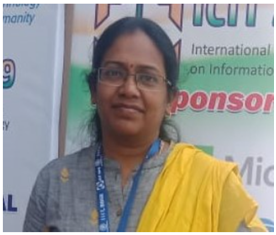
Dr. Chinmayee Dorahas completed her Ph. D. in the area of Biomedical Signal processing from the International Institute of Information Technology, Bhubaneswar. She has joined Centurion University of Management and Technology in December 2020. Apart from teaching, She is interested in novel research techniques that could bring a change and motivate people around us. She […]

Prabhat K. Patnaik
Asst. Professor in School of Engineering and Technology Department of ECE
VIEW PROFILEPrabhat Kumar Patnaik is an Assistant Professor in the Electronics and Communication Engineering Department of Centurion University of Technology and Management. He is a member of IEEE, IAENG and Life Member of ISTE, ISRD. His research interest includes Antennas, Microwave and Digital Circuits. He has contributed many technical papers in his research area in Internal […]



